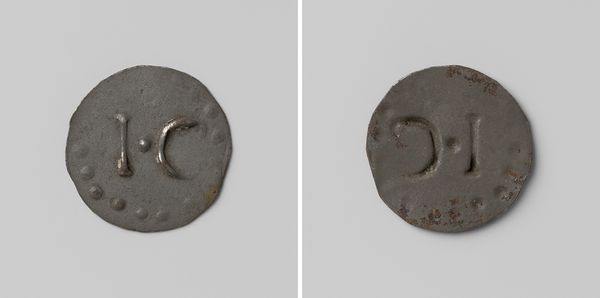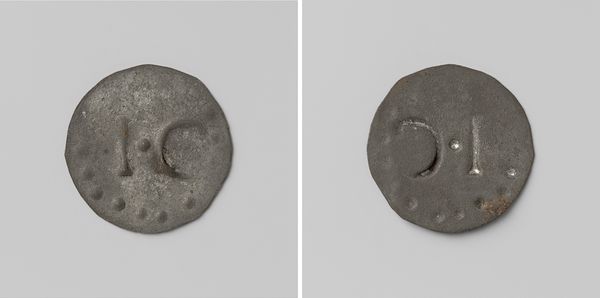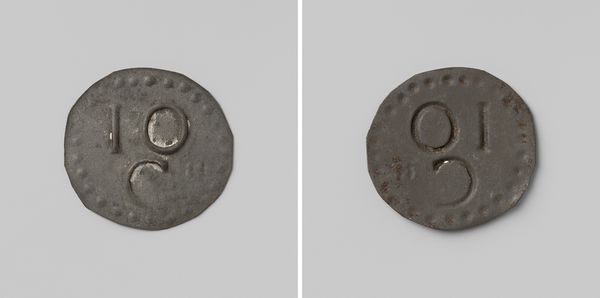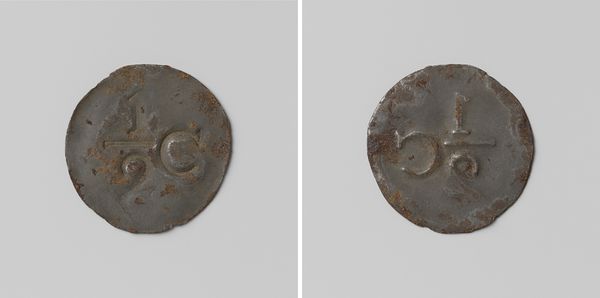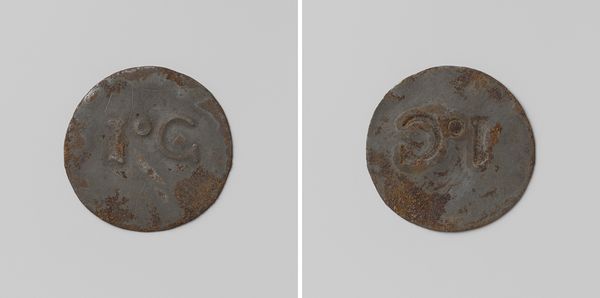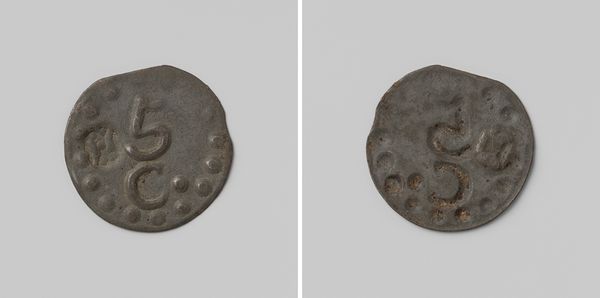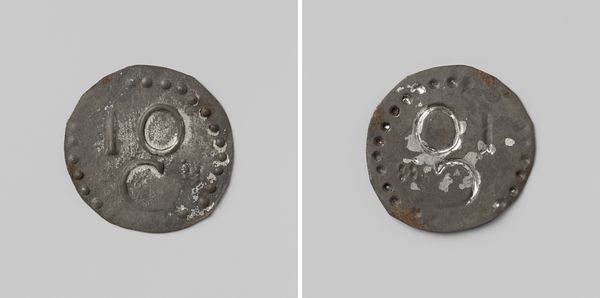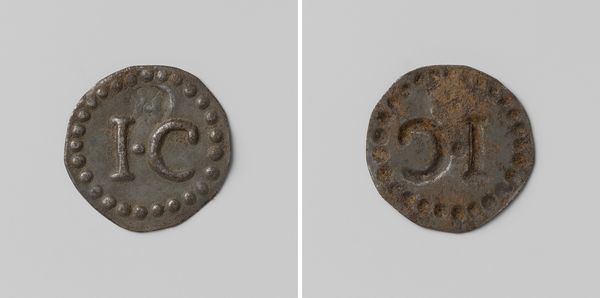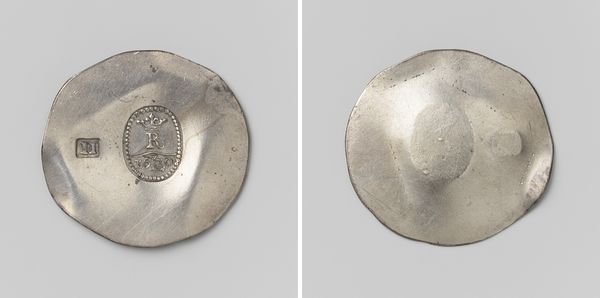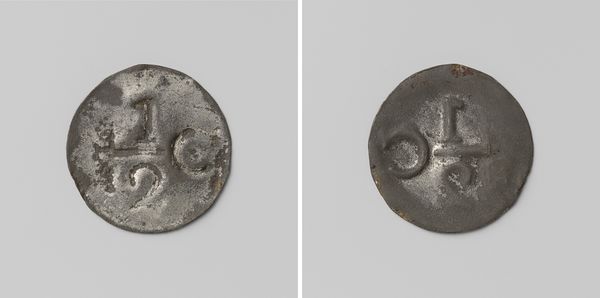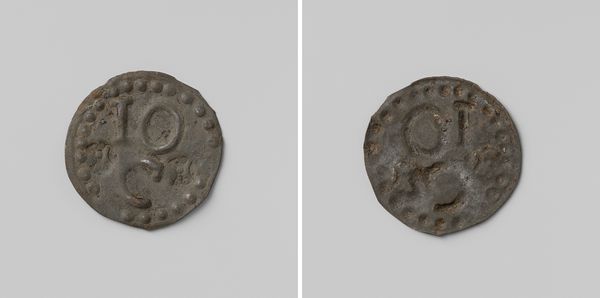
Strafgevangenis Ommerschans, huismunt geslagen op last van de Maatschappij van Weldadigheid ter waarde van ½ cent before 1830
0:00
0:00
metal, found-object, sculpture
#
medieval
#
metal
#
sculpture
#
found-object
#
sculpture
Dimensions: diameter 3.8 cm, weight 2.86 gr
Copyright: Rijks Museum: Open Domain
Curator: Immediately, I am struck by its simplicity. The dull, grey metal is suggestive of something functional, something unadorned. Editor: Indeed. We are looking at a piece that served a very particular purpose. This is a house coin from the Ommerschans penal colony, commissioned by the Society of Benevolence sometime before 1830. It's made of metal, likely iron or lead, and represents half a cent. Curator: A half cent! The symbols of value are interesting, but considering its origins, the image of money feels especially loaded. Was it intended to suggest some sort of controlled economic activity, perhaps a means of maintaining order and productivity? Editor: Precisely. The Society of Benevolence sought to "re-educate" the poor through work, discipline and education. The coin’s presence within the Ommerschans, a place meant to correct social ills through enforced labor, shows the attempt to structure even the most minute transactions. Curator: So, the imagery on each face is critical here. The monetary value is, on the face, innocuous, but it acts as a double agent within that socio-political background of "re-education." But what does the other side of the coin feature? Some sort of heraldic emblem perhaps? Editor: Exactly. The other face bears a stylized "W", which stood for "Weldadigheid" which roughly translates to "Benevolence". Here, they wanted to visually communicate to all the residents about what sort of virtues they hoped to impart onto them. Curator: So even something as humble as a coin became a vehicle for shaping cultural attitudes and enforcing behavioral norms? An extremely pragmatic piece! Its scale, of course, contributes to the powerful impression of direct, inescapable oversight, doesn't it? Editor: That's right. Everyday life for people there would have revolved around this. The institution becomes embodied in a simple object that speaks to broader patterns of control and social reform. Its presence highlights that interplay between individual experience and social forces. Curator: Thinking about the use of this imagery is critical; this is such a telling little item. This piece helps reveal deeper histories about a prison system and also the societal intentions that uphold its practice.
Comments
No comments
Be the first to comment and join the conversation on the ultimate creative platform.
